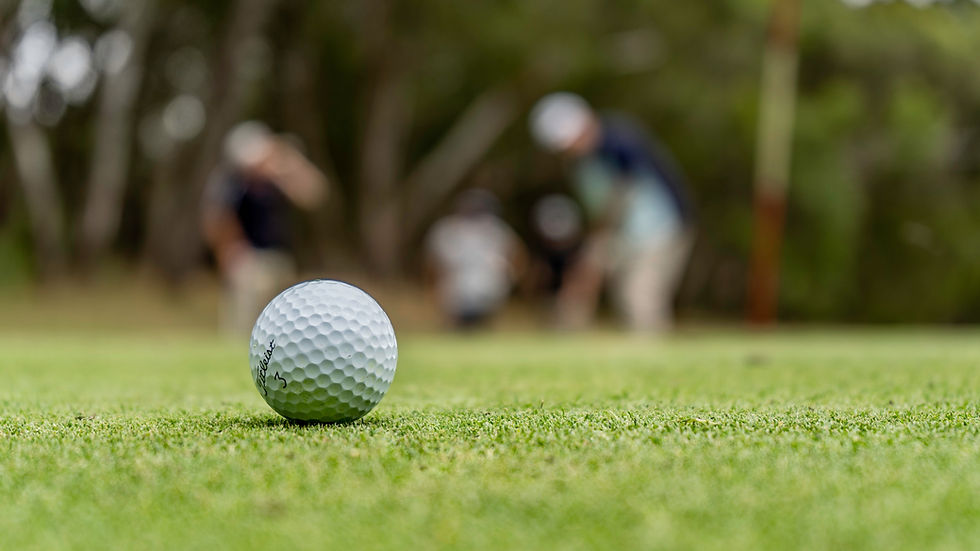Golf Gear Questions You Were Afraid To Ask: Am I good enough for premium golf balls?
- Pacific Coast Content

- Jun 29, 2021
- 4 min read
By Ryan Noll
Originally posted on Golf.com

Choosing the right golf ball based on your ability used to be easy. For a long time, better players chose golf balls with soft covers to help increase spin for more shotmaking capabilities. The caveat was these types of premium golf balls were more expensive and didn’t last very long. Average-to-high handicappers, on the other hand, steered toward durable distance balls which coincidentally were more affordable — an important factor considering average golfers lose more golf balls than better players do.
Nowadays, though, things are better but more complicated. In today’s golf shops, golf balls come in multiple categories, ranging from value to premium with varying levels of performance. You can find a value golf ball made for better players, now. There are even premium balls (by “premium,” we mean a ball that costs north of $40 per dozen) specially made for average players with moderate swing speeds, too.
How can anyone make sense of this? And is a premium ball always a better choice? Let’s start with acknowledging one simple truth: choosing the right golf ball is a personal affair. And just because your favorite PGA Tour superstar uses a particular model, it doesn’t always mean you should too. Knowing that, let’s dig in.
1. Check your swing speed before picking a ball It may not be fair, but it’s true. Players with faster swing speeds will be able to discern more differences in how a premium multilayer ball performs off the tee with a driver than will players with moderate to slow swing speeds. The reason comes down to compression. Fast swing speeds have what it takes to transfer more energy through a soft cover, mid layer and into the core of the golf ball. If you’re a player with an average-to-slow swing speed, it’s likely you’ll see no real distance gains using an expensive multi-layer ball than you would opting for a value-driven, two-piece ball with a firm/soft cover and a soft core.
2. Golf balls with soft covers can help pretty much all players The flipside to the first tip is that average players who want some added control may very well see some more spin with iron shots and with wedge shots around the greens when using a ball with a soft cover material. This is because you’re not hitting the ball as hard and you have a steeper angle of attack, and a soft cover will cling to the clubface more to increase spin. A ball like Srixon’s Q-Star Tour ($32.99 per dozen) might be just the ticket — it’s a mid-priced ball with a urethane cover designed to feel soft and spin more around the greens. It’s a great option if you’re on a budget but don’t want to skimp on performance.
3. There’s a ball that feels the way you want it to in virtually every category
It used to be that premium balls felt soft and value balls felt hard/firm. Now, you can pretty much get a golf ball that feels any way you want in any category. There are soft-feeling distance golf balls with lower core compressions and firm-feeling premium balls — it’s up to personal preference — especially when it comes to how a ball feels when you putt.
4. Check your ball before you make swing or equipment changes
If you’re struggling with distance or you hit the ball too high, low and/or if have problems with control, it might not be you or your clubs — it might be that you’re playing the wrong golf ball. If you hit it too high, try a firmer ball or one with a dimple pattern that promotes a lower flight. Try the opposite if you hit it too low. As for control, there’s such thing as golf balls that are designed to reduce spin with a driver but maintain or even increase spin with shorter clubs. Srixon’s Z-STAR XV ($42.99 per dozen) does just that — it’s a four-piece multi-layer ball that drastically knocks down spin rates with a driver for more distance and straighter ball flights, while still producing ample spin rates around the green.
5. Give whatever ball you play a flighting chance
Because the ball you play can greatly affect your ability to score, you’ll never dial in your distances and shot patterns if you don’t stick with one model for, at minimum, 3 to 4 rounds at a time. It takes at least that long to judge how the ball feels, flies and responds to different clubs. You may find that the best ball for you isn’t the longest if you need more control. Or maybe that extra 5 to 10 yards off the tee is worth more than the ability to shape iron shots. It comes down to what we said earlier in that choosing the right ball is a personal decision. And, it’s best achieved with the help of a professional golf ball fitter who can spare you having to go through a lengthy (and costly) trial and error process.
For more articles like this, visit Golf.com.



Comments